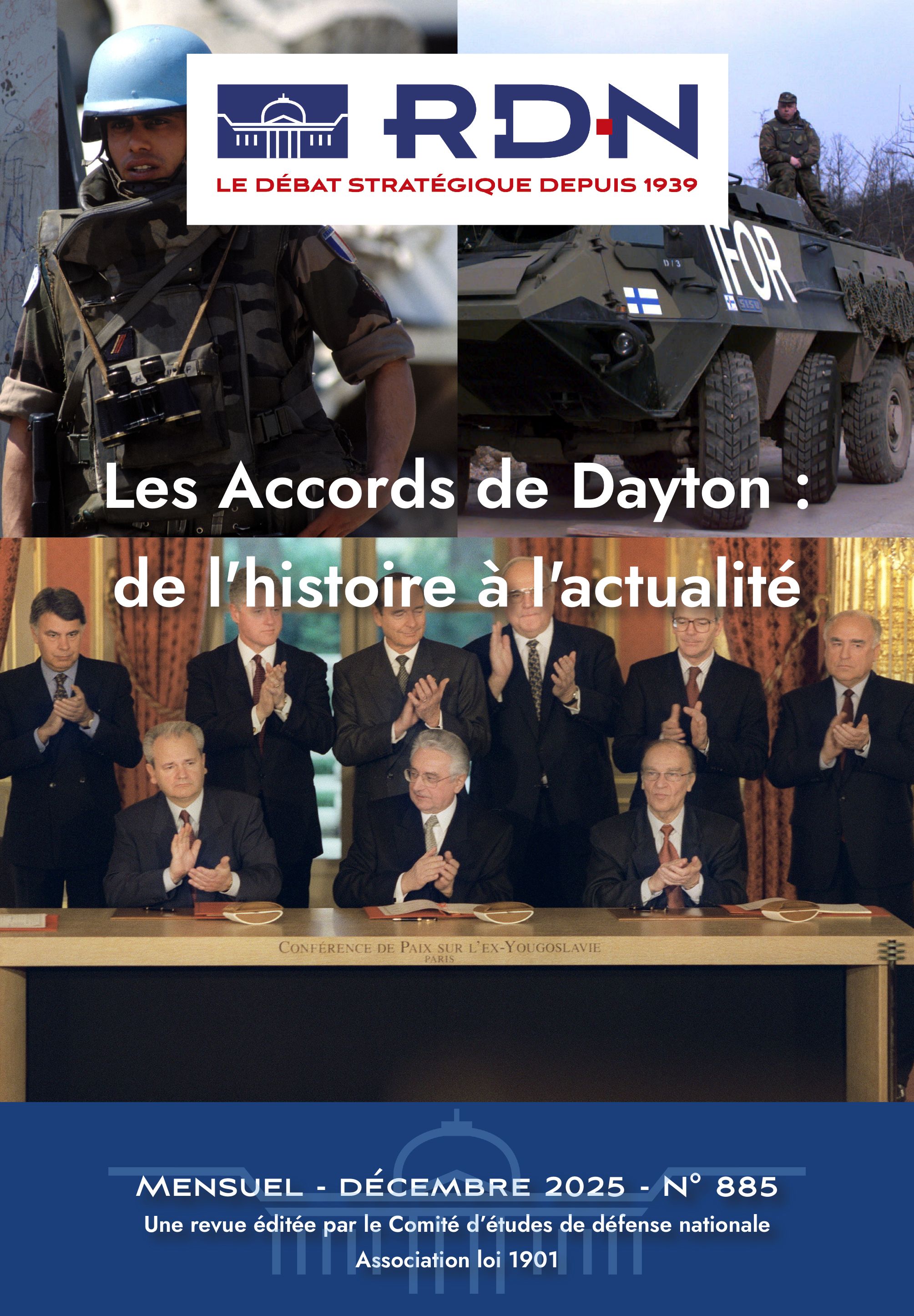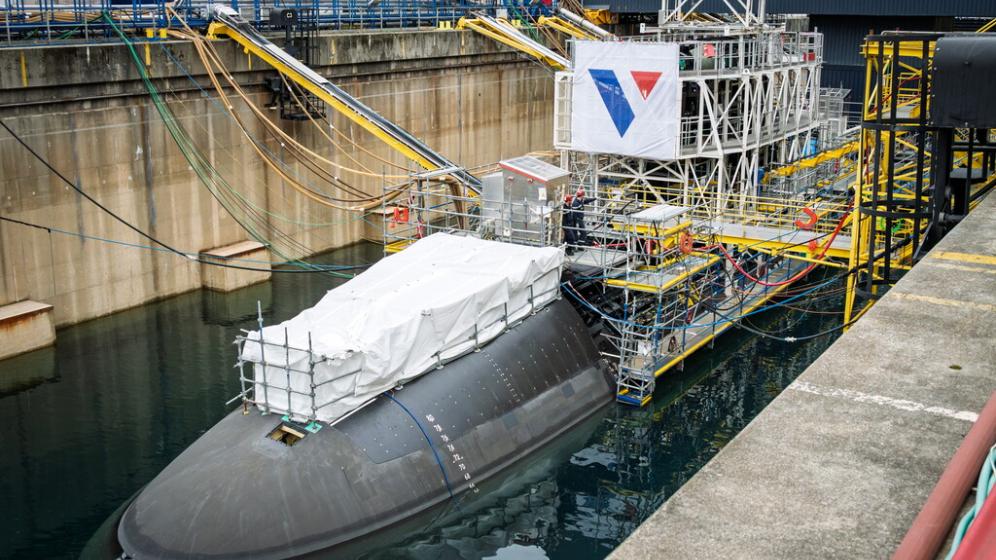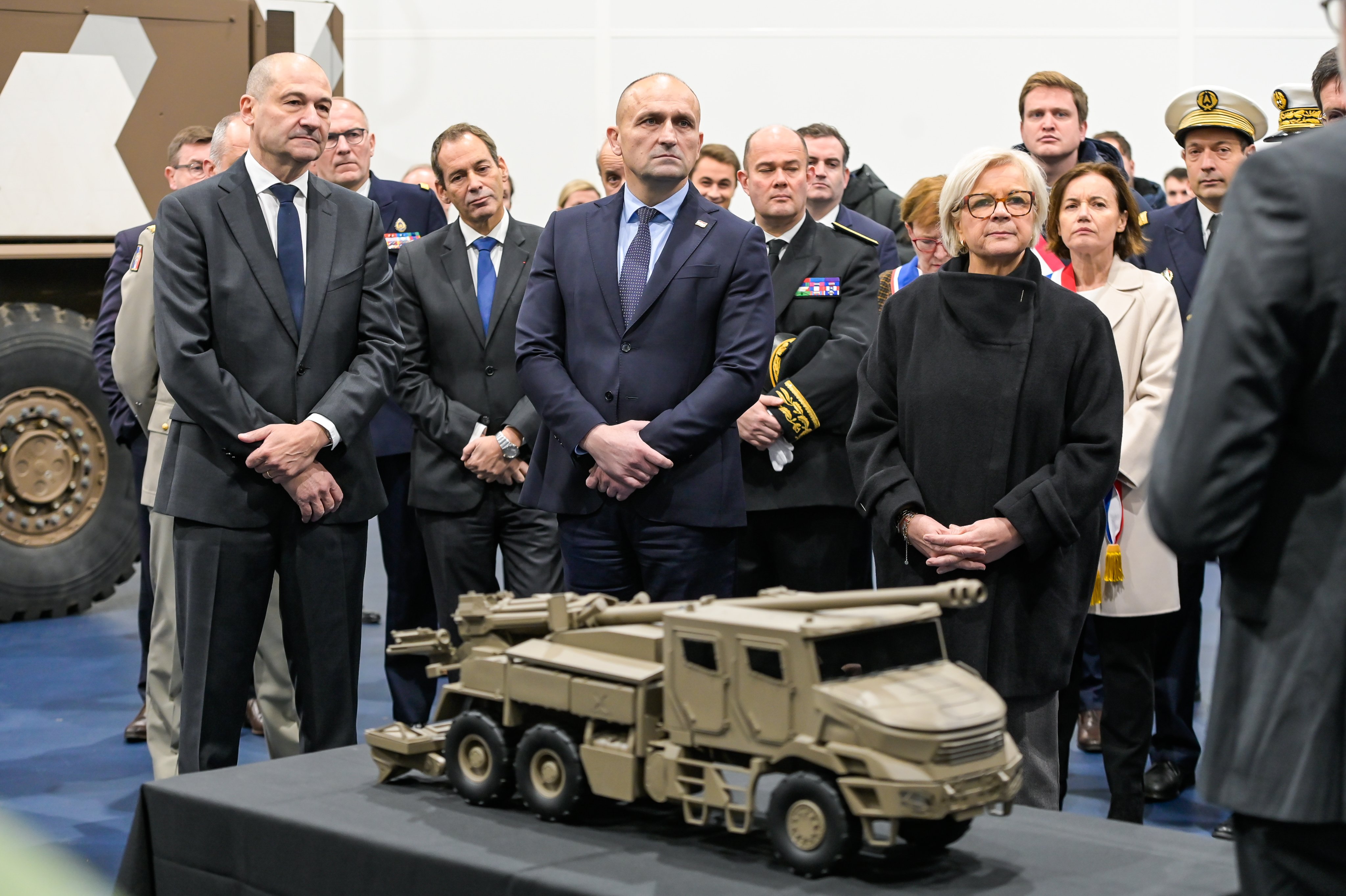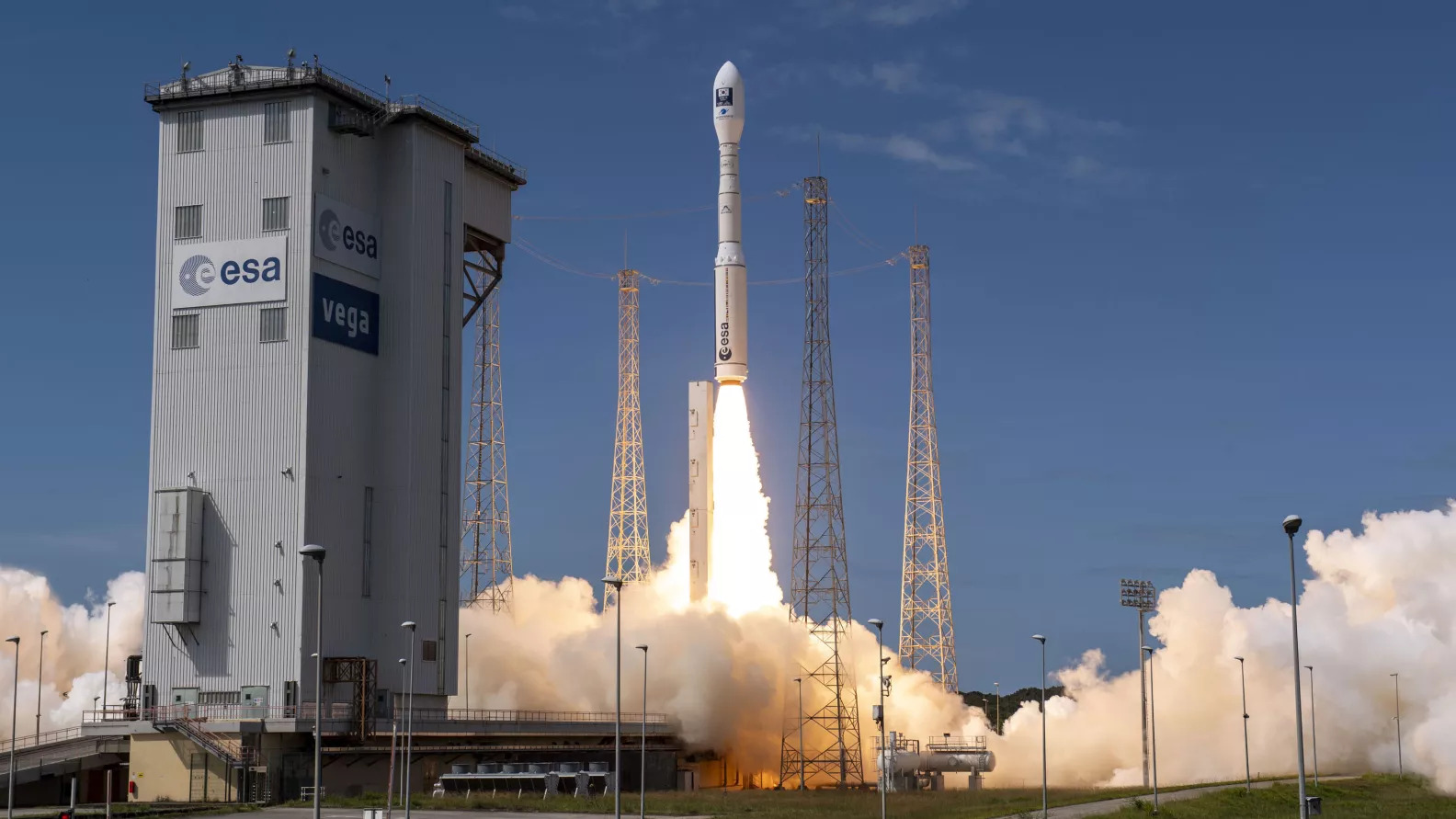Since 2022, the war in Ukraine has been conducted in the shadow of the nuclear threat. Russia is employing this threat in its strategy of coercion. Other nuclear weapon states must now decide how they wish to respond to the Russian rhetoric without sparking off a dangerous escalation. On bilateral and multilateral levels the nuclear world order is being disrupted by this conflict and by use of the nuclear threat.
Nuclear Dialogue Since the Outbreak of War in Ukraine
The war in Ukraine has been waging for over a year, overshadowed by the nuclear threat. The various nuclear dimensions to this conflict have been examined and identified.(1) The propensity of Russian officials to have manipulated this threat very early in the conflict and to remind everyone regularly of the destructive capability of Russian forces has given rise to considerations and debates forgotten since the darkest moments of the Cold War. For example, Western mainstream media have again been talking of the effects of nuclear weapons and the consequences of a detonation over their territory. Military experts have been looking at the tactical strike options that might be envisaged by Russian forces and Moscow’s strategy of nuclear deterrence, coercion and, if necessary, intimidation has been examined at length.
It is also instructive to look into the way in which the war in Ukraine has altered the nuclear grammar of the other powers, particularly of the three Western nuclear weapons states (United States, France and United Kingdom). There states initially had to decide how they wished to respond to the aggressive Russian rhetoric, both individually and in coordination, especially within the framework of NATO. The conflict has certainly influenced the various bilateral and multilateral nuclear discussions, making it more difficult to limit strategic competition and proportionally increasing the risk of escalation towards a nuclear exchange.
Aggressive Russian Language
Just as it did during the invasion of Crimea in 2014, Russia employed aggressive nuclear language in parallel with its brutal invasion of Ukraine. On 24 February 2022, Vladimir Putin declared, “No matter who tries to stand in our way or all the more so create threats for our country and our people, they must know that Russia will respond immediately, and the consequences will be such as you have never seen in your entire history. No matter how the events unfold, we are ready”.(2) These words were widely interpreted as an implicit nuclear threat, underlined again by the Russian President a few weeks later, “Let me emphasise once again: if anyone intends to intervene from the outside and create a strategic threat to Russia that is unacceptable to us, they should know that our retaliatory strikes will be lightning-fast. We have the tools we need for this, the likes of which no one else can claim at this point. We will not just brag; we will use them if necessary. And I want everyone to know this; we have made all the decisions on this matter”.(3)
Since the beginning of the conflict, Russia has been playing the nuclear threat tune in different keys: reminders at the highest level of its status as a nuclear weapons state, aggressive and alarmist declarations by commentators and parliamentarians, yet also more reassuring words, from the foreign minister in particular, who dismissed as unlikely the possibility of the conflict becoming nuclear in the short term. The intention behind this language has been closely studied.(4) The declarations have been compared with the actual activity of the strategic forces, the tests, deployment of units and their alert states, and deployment on the ground of dual-capable missiles, able to carry conventional or nuclear payloads. From the point of view of official doctrine and the alert level of forces, this analysis has shown that there have been no changes up to now to give any impression that Russia might be preparing for a nuclear attack. Nevertheless, Russian officials’ extensive reference to their nuclear capability is clearly in line with a policy which is probably to seek to intimidate Western audiences, limit Euro-American support for Ukraine, and raise the stakes in Russia to rally the population to its government. It has also been noted that the regular reference to the power of Russian nuclear forces could be designed to mask the relative weakness of conventional forces.(5) It was also a way—especially at the start of the conflict, and perhaps since the annexation of the new republics to the Russian Federation—of making sanctuaries of the land conquered through aggression, by dissuading any Western operation in support of Ukraine’s recapture of its lost territories.(6)
Although this Russian nuclear language varied in intensity during the first year of conflict, the commonplace aggressive statements and frequent nuclear threats have been rejected by a large part of the international community as irresponsible behaviour which carries the seeds of risk of escalation of the conflict. In this context, the Western partners, and in particular NATO member states, have had to face up to the challenge of responding to this Russian language in order to make clear their refusal to yield to nuclear blackmail without increasing the risk of nuclear conflict.
Respond Without Imitating: the Challenge of Western Powers
Although they share the same aim of condemning Moscow’s agitation and rejecting all nuclear coercion but at the same time not wishing to imitate Russian rhetoric, NATO’s three nuclear weapon states did not adopt similar strategies at the start of the conflict. For the United States, President Biden immediately decided that moderation was the order of the day by delaying the launch of an ICBM planned for March 2022, noting the need to avoid any risk of false interpretation of that sort of activity.
Conversely, France decided to go ahead with a qualification test on 23 March 2022 of the new improved medium-range air to surface missile (air-sol moyenne portée-amélioré—ASMPA). A few days beforehand, the Minister of foreign affairs had publicly stated that NATO is also a nuclear alliance. Moreover, the press had evoked the possibility of sending three of the four French SSBNs (Sous-marins nucléaires lanceurs d’engins—SNLE) out on operational patrol, a situation quite unheard of since the end of the Cold War.(7)
During the second wave of Russian nuclear gesticulation, in September and October 2022, the roles were somewhat reversed. The French President Emmanuel Macron clearly stated during a TV interview that France would not respond with a nuclear strike to Russian use of nuclear weapons in Ukraine or in the region.(8) Joe Biden declared that “…no one can be sure what would happen [following such a strike] and [it] could end in Armageddon”.(9) Through their differing approaches, the two heads of state have sought to fulfil potentially divergent aims: first, to deter the Kremlin from using any nuclear weapon in the conflict whilst reassuring their own populations and avoiding any trivialisation of the idea of the use of nuclear weapons. Emmanuel Macron considered that we should not speak too much of a possible Russian nuclear attack, probably wishing not to give the impression that this scenario was conceivable from a military point of view, thereby limiting the risk of a self-fulfilling prophesy.(10)
These examples show that two close NATO allies were able to make marginally different statements at different times whilst sharing fundamentally similar strategies. First, it is a matter of emphasising the strength of their own deterrent forces and ensuring the relevance of their doctrine. Whether one looks at France, the United Kingdom, the United States or NATO as a whole, the past year has been marked by reminders of the investments undertaken to modernise nuclear capabilities and by high-level political declarations which recall the central position of deterrence in the defence of the country and the Alliance. In the same spirit, the publication in October 2022 of the US Nuclear Posture Review(11) is worthy of note, as is the June 2022 update of NATO’s Strategic Concept.(12) Second, the Western nuclear powers have sought to distance themselves from Moscow and contrast their responsible and wholly defensive stance in nuclear matters to the Russian attitude, based on nuclear blackmail, taking civilian society hostage and use of the weapons to support an aggressive posture.(13)
Evolution of Russian-American Strategic Dialogue
Beyond the postures adopted by states individually, the nuclear dialogue between the major powers has evolved since the beginning of the war. It is notable that one of the first US declarations on the subject was the announcement of the suspension of the dialogue with Russia on strategic stability, which had been relaunched in 2021. The aim of this bilateral dialogue was not only to discuss the outlines of future agreements between the two countries on arms control, but also to adopt measures aimed at limiting strategic risks and reducing the risk of escalation between them. The US President has on occasion opened the door to discussions aimed principally at negotiating an agreement that could follow on from the New START treaty, which limits the strategic arsenals of the two countries and will expire in 2026. His Administration has nevertheless made mention of the difficulties in discussing these subjects with Moscow so long as Russia pursues its aggression in Ukraine. In addition, Vladimir Putin himself has shown little interest in the topic. In fact, for several months he refused to restart the inspections on the ground, provided for under the New START treaty, which had been interrupted by the Covid epidemic, and finally announced unilateral Russian suspension of the treaty on 21 February 2023.
The fallout from the war in Ukraine has been gradual erosion of the means of control and limitation of the nuclear competition between Moscow and Washington, first with the suspension of the strategic dialogue, then the interruption of the New START treaty inspection programme. In particular, communication between the two powers has been adversely affected even if certain confidence measures and channels of communication still survive. The effect of the strategic environment on the inclination to agree on establishing minimal measures of restraint and transparency to limit the risk of nuclear conflict can be seen at the bilateral level and also in wider forums. Meetings of the P5, the group of nuclear weapons states recognised by the Non-Proliferation Treaty (NPT), have been less frequent since February 2022, and on the multilateral level, Russia has adopted a posture of continual challenge to the international nuclear order, which prevents any support of regulatory measures.
The Role of the Small European Nuclear Powers
On the European level, limiting nuclear competition above all depends on dialogue between Moscow and Washington. In a similar vein, NATO member states broadly consider that their security is primarily ensured by a stable deterrence relationship between the United States and Russia, and are particularly concerned that the broader American deterrent should be credible from both capability and political points of view. Despite that, the two other nuclear powers in the Alliance defend their differences and claim a role in the nuclear debate that has been imposed on the continent since the start of the conflict.
First, as we have seen, the fact that whilst keeping a common broad view countries might choose a slightly different strategic language as they seek as much to show their restraint as to affirm their determination, is often put forward as an element that serves the Alliance deterrent posture by complicating the adversary’s decision process.(14)
Moreover, European nuclear allies play an important role in the denunciation of irresponsible and dangerous Russian behaviour, and in promotion of a global nuclear order based on respect for international agreements, the UN Charter being at the top of the list.
These states, and France in particular by virtue of its status within the European Union, play a special role in the developing debate on the security of the continent, their desire being to bring greater weight to bear, not in replacing, but in complementing NATO’s mission at that level. Paris has made widely known its desire for broader discussion with European allies on the role of its national deterrent, and the war being waged on the borders of the EU has given impetus to the will to examine together both the threat and those assets best suited to protect the security of the continent.
March 2023
(1) Tertrais Bruno, Les armes nucléaires et la guerre en Ukraine : bilan provisoire et conséquences possibles, (Nuclear weapons and the war in Ukraine: provisional assessment and possible consequences), Note of the FRS, n° 28/2022, 21 July 2022, 10 pages (https://www.frstrategie.org/).
(2) Putin Vladimir, Address by the President of the Russian Federation, Moscow, 24 February 2022 (http://en.kremlin.ru/events/president/news/67843).
(3) Putin Vladimir, Meeting with Council of Lawmakers, Saint Petersburg, 27 April 2022 (http://en.kremlin.ru/events/president/news/68297).
(4) See especially Facon Isabelle, Guerre en Ukraine : le sens du signalement nucléaire russe [War in Ukraine: meaning of Russian nuclear language], Note of the FRS n° 30/2022, 27 July 2022, 11 pages (https://www.frstrategie.org/).
(5) Ibidem.
(6) Facon Isabelle, Septembre 2022 et le regain d’agitation nucléaire Russe, (September 2022 and the revival of Russian nuclear agitation) Bulletin n° 102, Observatoire de la dissuasion, October 2022, p. 5-8 (https://www.frstrategie.org/).
(7) Jézéquel Stéphane, ‘Why has France sailed 3 nuclear submarines from Ile Longue [the SSBN base]?’ Article in the newspaper Le Télégramme, 21 March 2022 (in French).
(8) Roux Caroline, Interview of Emmanuel Macron, guest on L’Événement, a political programme on TV channel France 2, 13 October 2022 (https://www.francetvinfo.fr/).
(9) Collinson Stephen, Biden sends a Careful but Chilling New Nuclear Message to Putin in CNN Interview, CNN Politics, 12 October 2022 (https://edition.cnn.com/).
(10) Maitre Emmanuelle, Répondre à la menace nucléaire (Responding to the nuclear threat), Bulletin n° 102, Observatoire de la dissuasion, October 2022, p. 8-11 (https://www.frstrategie.org/).
(11) US Department of Defense, DoD Releases its 2022 Strategic Reviews – National Defense Strategy, Nuclear Posture Review, and Missile Defense Review, 27 October 2022 (https://www.defense.gov/).
(12) NATO, Strategic Concept 2022, 29 June 2022 (https://www.nato.int/).
(13) This aim appeared on publication of a trilateral document in the margins of a conference examining the NPT in 2022: NPT - Ministerial statement of France, the United Kingdom and the United States of America, 01 August 2022 (https://www.diplomatie.gouv.fr/).
(14) This is the interpretation that appears in the latest (2022) NATO Strategic Concept.







